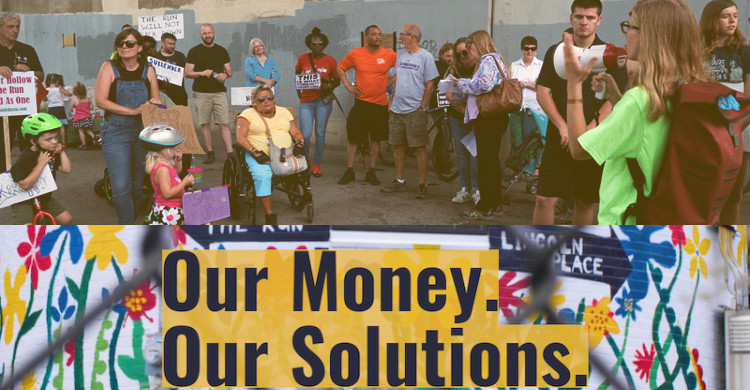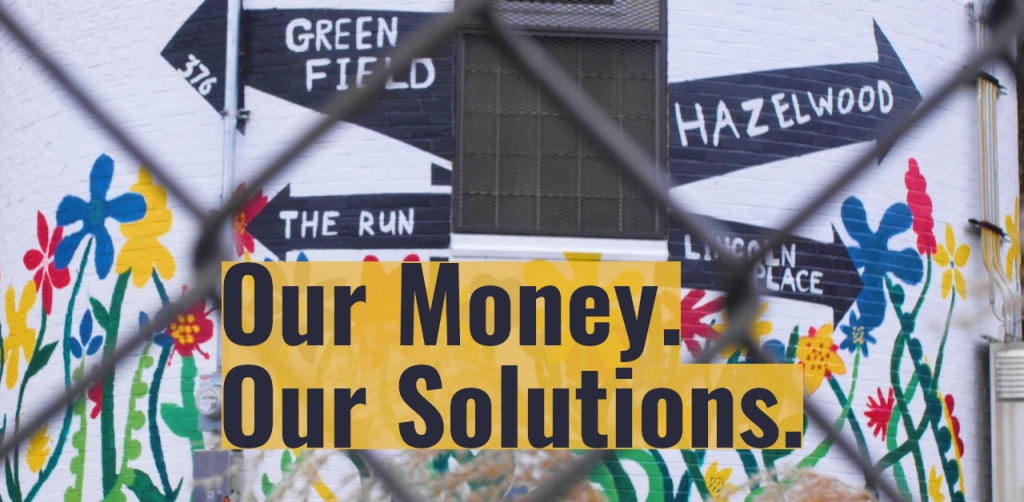
They’re back at it again: trying to use public dollars to build luxury transportation for wealthy developers.
After a disastrous first attempt at a final public meeting for the Mon Oakland Connector project, the City’s Department of Mobility and Infrastructure, the Universities and the foundations that own Hazelwood Green are holding a second meeting on Thursday, October 29th, 6-8pm.
Residents who live in Hazelwood, Greenfield, the Run, Oakland, and Squirrel Hill, and any taxpayers in the City of Pittsburgh who understand the importance of equity and efficiency in public investments needs to join.
We are asking stakeholders (City residents, organizational representatives, Mon-Oakland corridor neighborhood residents, transit riders, CMU and Pitt students, renters and homeowners) to speak up during the public meeting Q&A portion or in the zoom chat. We ask that you introduce yourself and share why you are a stakeholder, then lay out your concerns or the needs that you see should be uplifted instead of the MOC shuttle roadway.
Instead of investing millions in the Mon Oakland Connector roadway, the City, Universities, and Foundation Partners should invest in a true community-generated transportation plan.
The project will cost about $25 million that that the city will pay to build the road through the park, then the foundation and university partners will pay an additional $16+ million to operate a short-term shuttle.
Instead of sinking millions of dollars into this ineffective project, these entities should fund the community’s Our Money, Our Solutions proposal to extend the 75 bus service into Hazelwood.
Why is the Mon Oakland Connector so bad exactly?
1. The MOC shuttle fails as a transportation project.
The Mon-Oakland Shuttle is projected to carry 180 passengers a day, primarily to two destinations– Carnegie Mellon University and Hazelwood Green, at an extraordinary cost per trip. The Mon-Oakland Connector will also be obsolete almost at its start: The shuttle’s full daily ridership capacity of 180 riders will hardly mitigate the proposed travel demand to Hazelwood Green, which is anticipated to be 20,413 trips by 2028, and 61,000 trips by 2060. That means no relief for Hazelwood, Greenfield and Oakland residents on the increased congestion and air quality issues that will only worsen as Hazelwood Green builds out.
And City residents don’t just need to travel between Hazelwood Green and CMU! By contrast, extending the 75 bus service would create new, direct connections from Hazelwood to the Southside (read: food, jobs), to the whole of Oakland (read: healthcare, jobs), Shadyside, East Liberty, Bakery Square, Morningside and Aspinwall.
The travel time on the 75 between Hazelwood and Oakland would be just as fast as the proposed shuttle. It could be implemented tomorrow. It would serve thousands of residents rather than a few hundred. And because the service would be run by Port Authority, it would be sustainable, affordable, publicly-run and fully accessible. Almono Partners could even pay for the 75 buses to be electric buses, and it would STILL be cheaper than funding the Mon-Oakland shuttle “pilot” phase.
2. Projects like this cause gentrification and displacement.
Yesterday, The City’s Department of Mobility and Infrastructure (DOMI)’s Director Karina Ricks compared the Mon-Oakland Connector to the Atlanta Beltline and Bloomingdale Trail in Chicago. These projects and similar trigger gentrification and displacement in low-income neighborhoods and in neighborhoods with a majority of people of color.
3. The MOC is the single-most expensive transportation corridor investment that the City is making, while the City is experiencing a record $100 million dollar budget shortfall.
The City does not have the resources to address critical resident needs during a on-going public health and economic emergency, let alone fund a luxury microtransit pilot project.
4. The City’s public process for the Mon-Oakland Connector has been abysmal.
The “final” virtual public meeting on the Mon-Oakland Connector shuttle roadway and the shuttle service will also be the first time that the public has seen the shuttle proposal. And this Monday, DOMI’s Director Ricks said in the Post Gazette that “most of the ‘hard engineering’ for the city work has been completed. The public still can have a say on the landscaping, lights and elements that will be included in park recreation areas.
‘There is certainly much on the table for input,’ [Ricks] said. ‘This is the opportunity the neighborhood has to weigh in.'”
Weighing in on “landscaping and lighting” is not what public engagement looks like. For the last five years, residents in Four Mile Run and Hazelwood have raised concerns and questions about the need, the harm and the benefits about running an autonomous shuttle, building a $23 million dollar bike trail, then building a roadway for a manned CMU to Hazelwood Green shuttle through Schenley Park. For more about the City’s evolving project descriptions, and community opposition, check out this WESA piece from March.
5. Building the shuttle roadway through Schenley Park and Sylvan Avenue will diminish our limited City green space and recreational areas, and will likely reduce the efficacy of the Four Mile Run flood remediation effort.
The project calls for the clear cutting of 900 trees, mostly in the Panther Hollow portion of Schenley Park. There has been no published analysis of how adding the non-permeable surface of the shuttle roadway would affect the desperately needed floodwater relief in the corridor. The Mon-Oakland Connector roadway will also substantially diminish the size of the soccer field in Junction Hollow.
6. Running shuttles along the Junction Hollow commuter bike path and next to the playing field puts users at risk.
Many cyclists consider the Mon-Oakland Connector a degradation of the existing connection between Downtown, Oakland and Southside because the MOC will require cyclists to share the commuter path with motorized vehicles.
There are, however, important pedestrian and trail improvements that residents have fought for and won over the course of the last five years, including the pedestrian tunnel to Panther Hollow Lake, and addressing the dangerous “Chute” connection (the Eliza Furnace trail along Second Ave from Swinburne St. to Saline St). These improvements should not be held hostage to the shuttle roadway. Finally, we need to ensure that members of the Hazelwood/Four Mile Run/Panther Hollow/Greenfield community get to stay to enjoy these improvements, and that they are not pushed out to make way for them.

We are Calling You to Action!
We are asking stakeholders (City residents, organizational representatives, Mon-Oakland corridor neighborhood residents, transit riders, CMU and Pitt students, renters and homeowners) to speak up during the public meeting Q&A portion or in the zoom chat. We ask that you introduce yourself and share why you are a stakeholder, then lay out your concerns or the needs that you see should be uplifted instead of the MOC shuttle roadway.